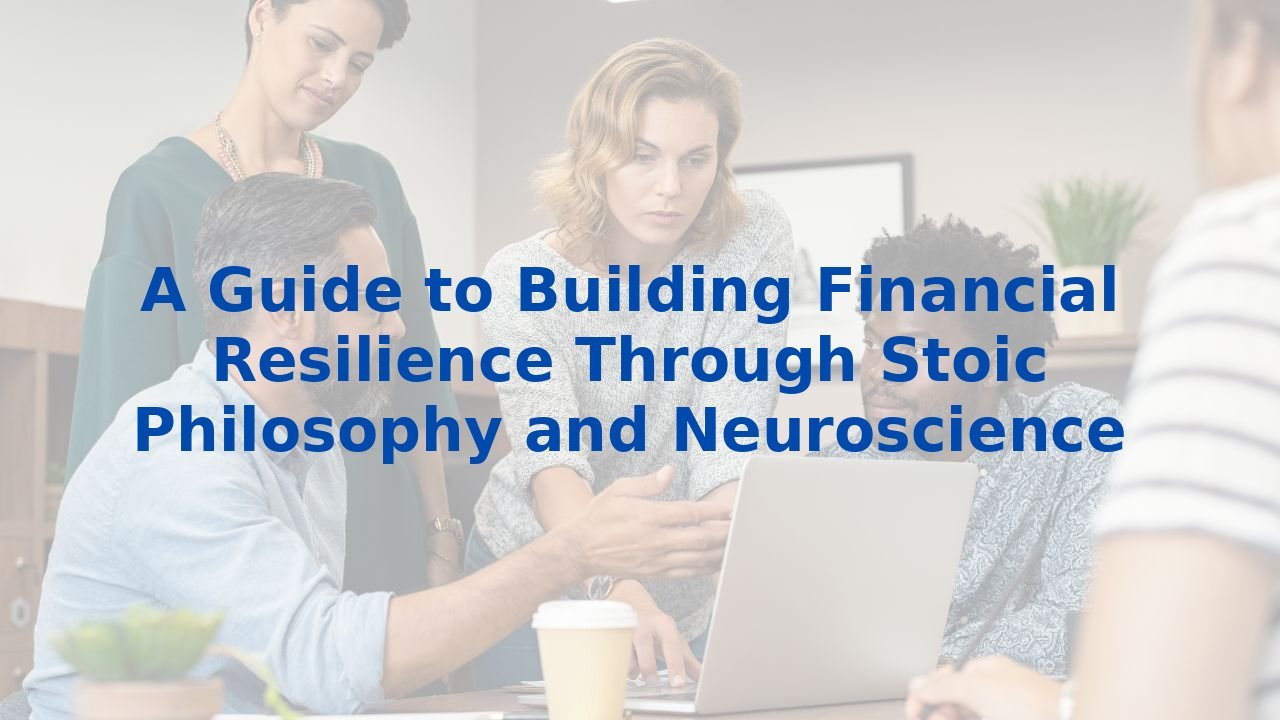A Guide to Building Financial Resilience Through Stoic Philosophy and Neuroscience
A Guide to Building Financial Resilience Through Stoic Philosophy and Neuroscience
In an ever-changing business landscape marked by unpredictability, the concept of financial resilience has emerged as a critical component for organizations aiming for long-term success. This resilience is not just about surviving financial downturns; it's about thriving through adversity, learning from challenges, and strengthening the core of your business. Interestingly, merging Stoic philosophy with contemporary neuroscience offers profound insights into cultivating such resilience within organizations.
Understanding Stoic Philosophy
Stoicism, a philosophy rooted in ancient Greek and Roman traditions, teaches the importance of focusing on what we can control while accepting what we cannot. This principle resonates strongly in the world of business. Challenges will always arise, from market volatility to unexpected disruptions. By adopting a Stoic mindset, leaders can foster a culture of calmness and rational decision-making amidst uncertainty.
“We suffer more in imagination than in reality.” — Seneca
This perspective encourages decision-makers to remain composed, think critically, and act swiftly even when faced with difficult situations. Applying this can help organizations reframe challenges as opportunities for growth, navigating financial obstacles with a clear, strategic vision rather than panic-driven reactions.
The Science of Resilience: Neuroscience Insights
Neuroscience plays a crucial role in understanding how our brains respond to stress and adversity. Research shows that resilience is not simply an inherent trait; it can be developed through practice and nurturing environments. By creating an organizational culture that encourages emotional intelligence, adaptive thinking, and psychological safety, businesses can build a workforce that can withstand pressures and emerge stronger.
Integrating these insights with Stoic principles allows leaders to train their teams in emotional regulation techniques, promoting mental flexibility and reinforcing the idea that while we cannot control external circumstances, we can control our responses. This fusion of philosophy and neuroscience paves the way for sustainable financial resilience.
Building Financial Resilience in Practice
To effectively implement these concepts within an organization, consider the following practical strategies:
1. Embrace a Growth Mindset
Encouraging a culture of continuous learning is essential. Employees should feel empowered to take initiative and view challenges as opportunities for development. This aligns closely with the Stoic belief in self-improvement and helps organizations adapt to evolving circumstances.
2. Implement AI-Enhanced Decision-Making
Artificial Intelligence (AI) can serve as a robust tool for enhancing financial resilience. By automating routine financial tasks like data entry and reporting, organizations can free up human resources to focus on strategic decision-making and creative solutions. This not only improves efficiency but also allows teams to engage in higher-value interactions and critical analysis—skills that are crucial in a volatile marketplace.
Moreover, AI can facilitate advanced data analytics, generating insights that enable organizations to anticipate market trends, optimize budgets, and make informed investment decisions, all of which are vital for maintaining financial stability.
3. Cultivate Strong Leadership
Effective leaders embody both Stoic wisdom and a neuroscience-backed approach to team management. They create environments where employees feel safe to express fears and concerns, ask questions, and learn from failures. This transparency fosters trust and improves morale, which in turn contributes to a resilient organization.
4. Prioritize Employee Training for AI Competence
As the integration of AI becomes more prevalent, it's imperative that organizations invest in training their teams. By equipping employees with AI skills, businesses enhance their adaptability and improve problem-solving abilities, empowering individuals to take full advantage of technological advancements. Not only does this help in seamless transitions, but it also nurtures a culture of innovation where creativity flourishes within strategic frameworks.
Consider establishing comprehensive AI training programs tailored to various departments—this approach not only strengthens the overall skill set but ensures that each team member can leverage AI's capabilities effectively, creating a unified, resilient workforce.
Conclusion
Integrating Stoic philosophy with insights from neuroscience creates a powerful framework for building financial resilience within organizations. By fostering a culture of adaptability, embracing AI technologies, and prioritizing employee development, businesses can not only withstand pressures but also emerge invigorated and prepared for future challenges. Financial resilience is not a destination; it’s a journey of growth—one best undertaken with wisdom and strategic insight. In the age of disruption, those who cultivate this resilience are bound to thrive.



